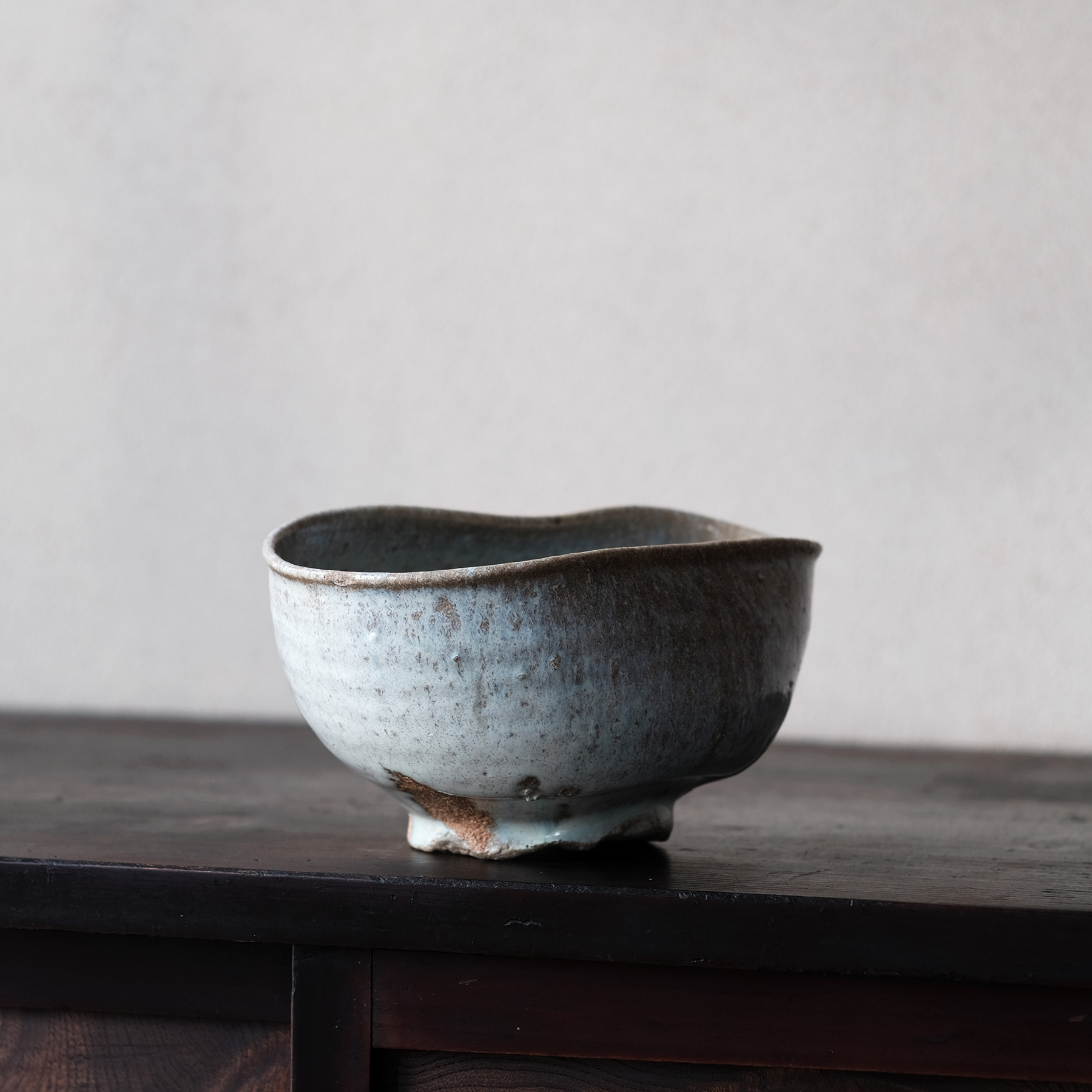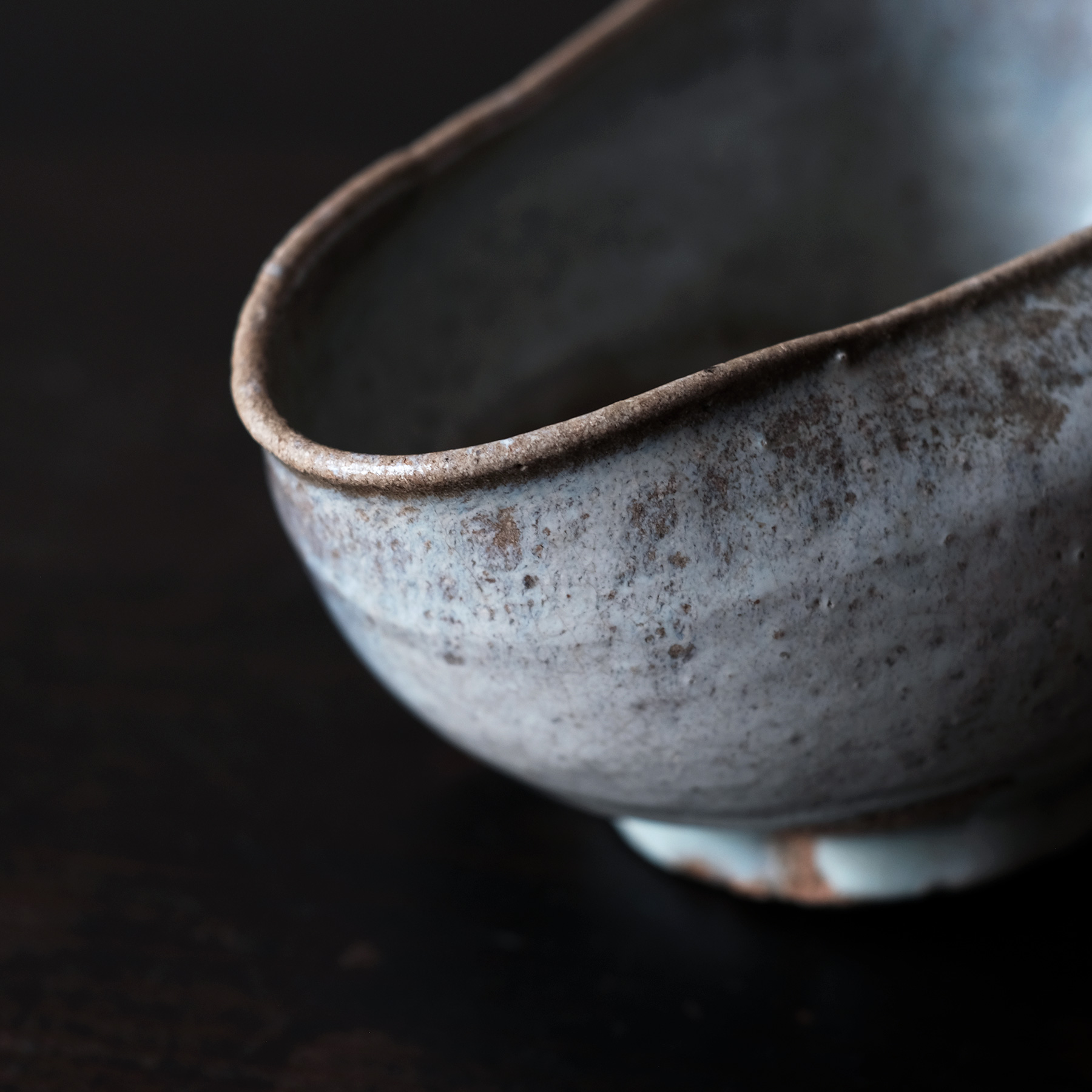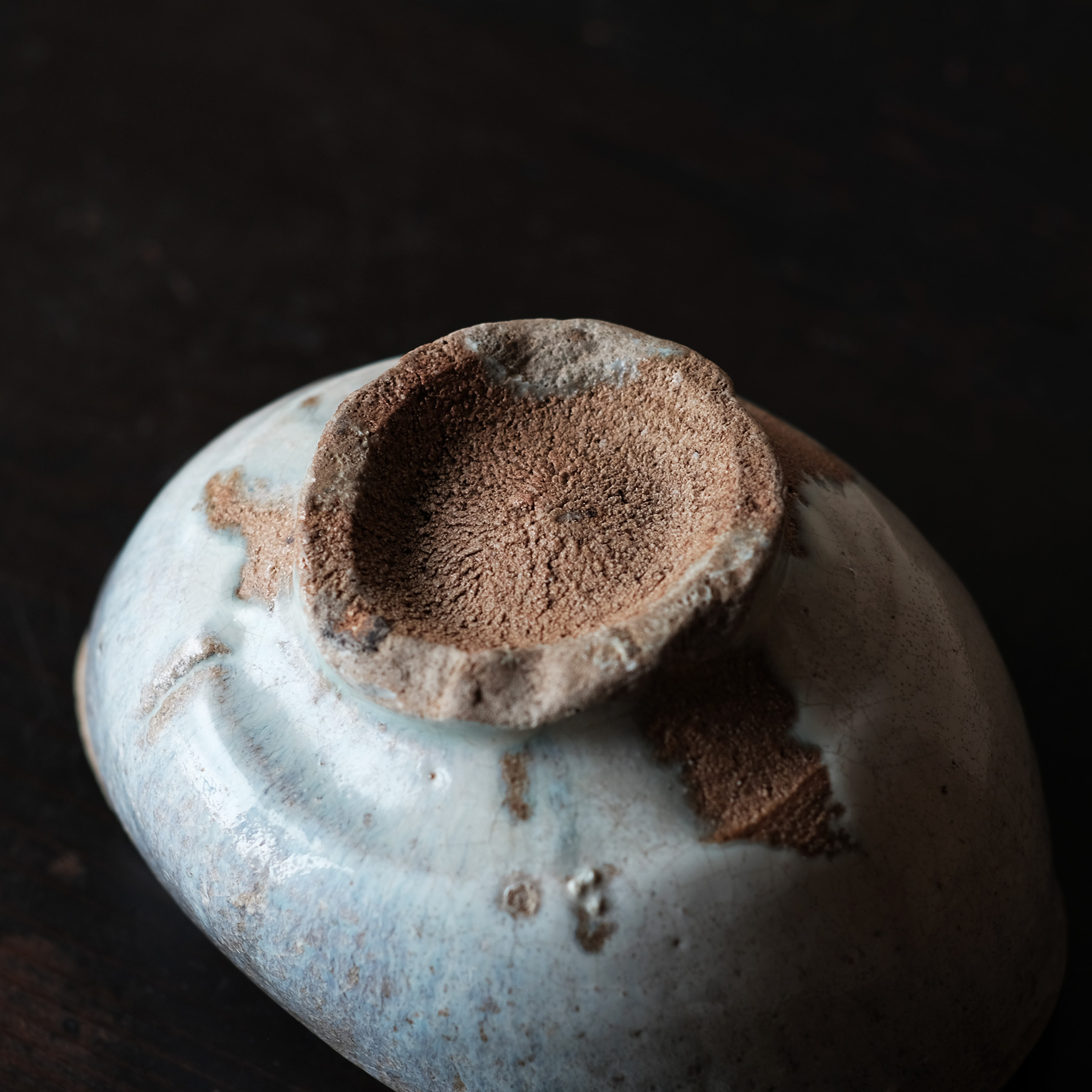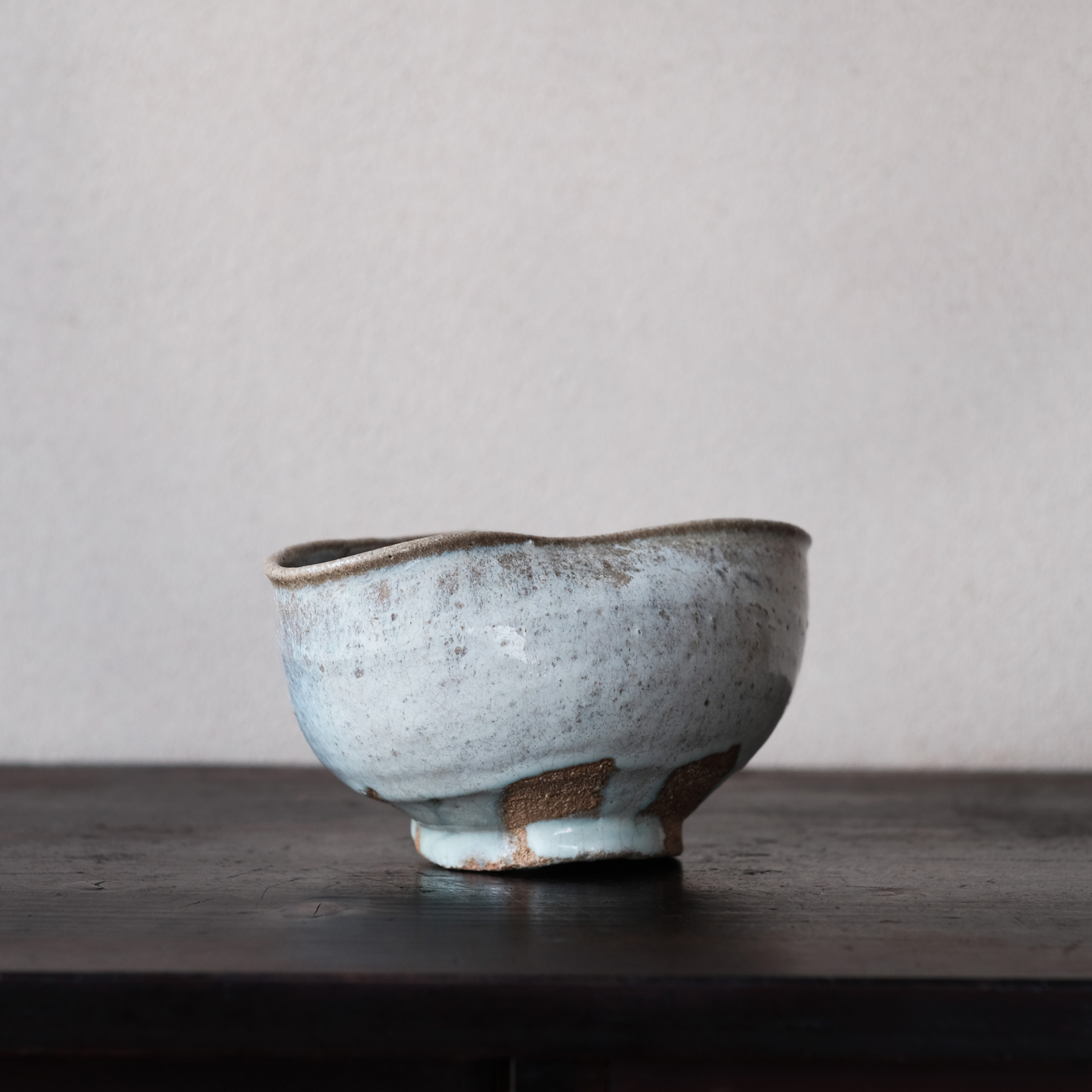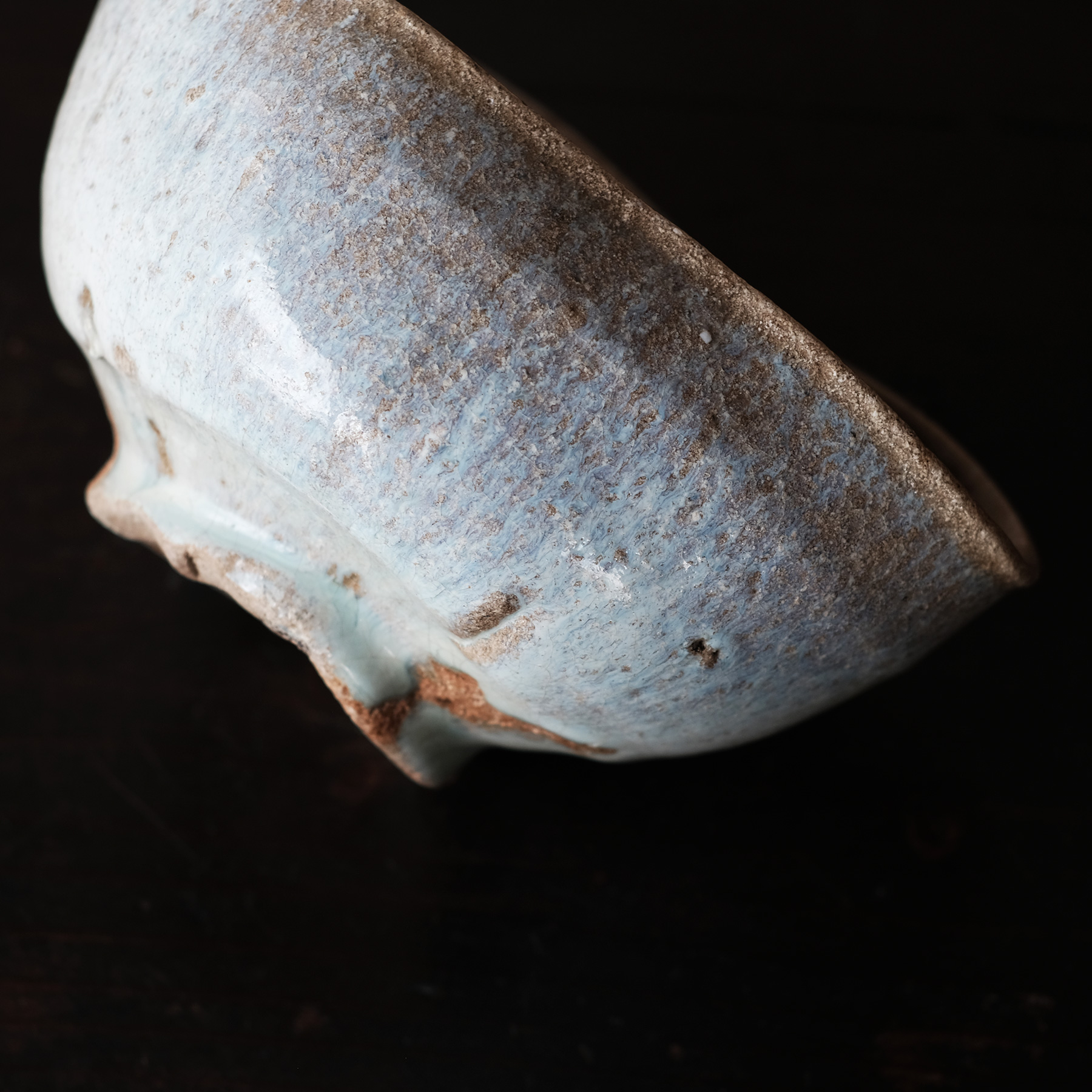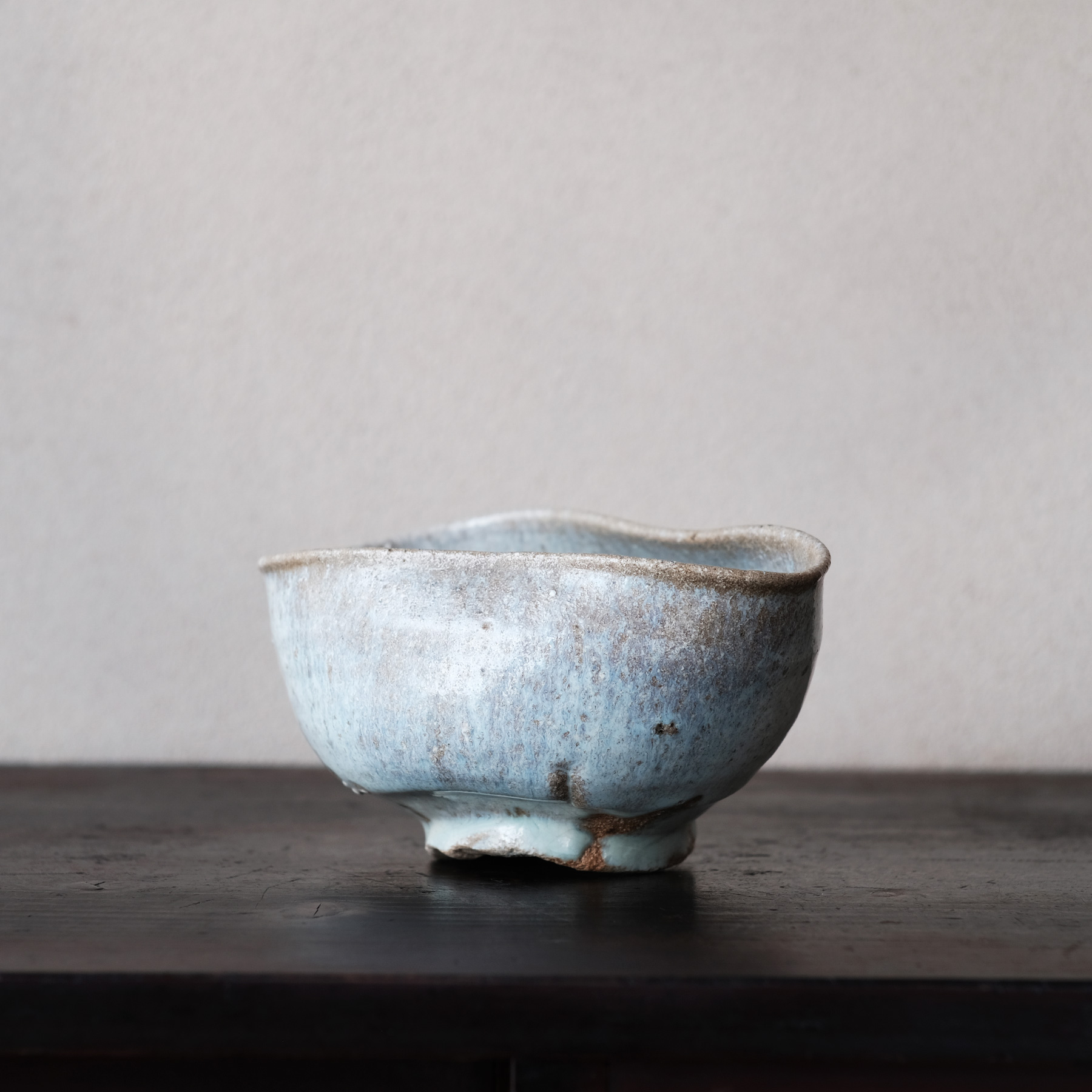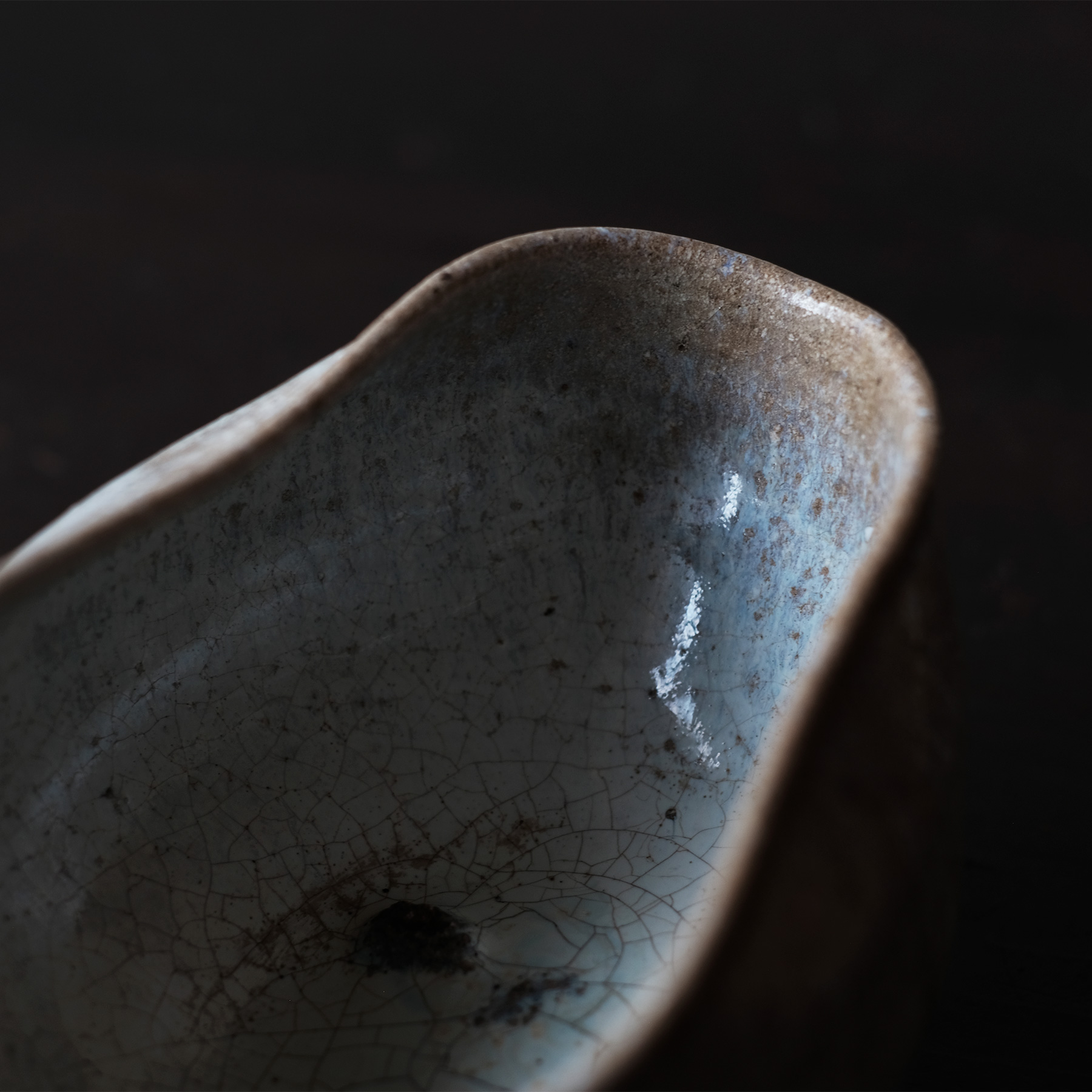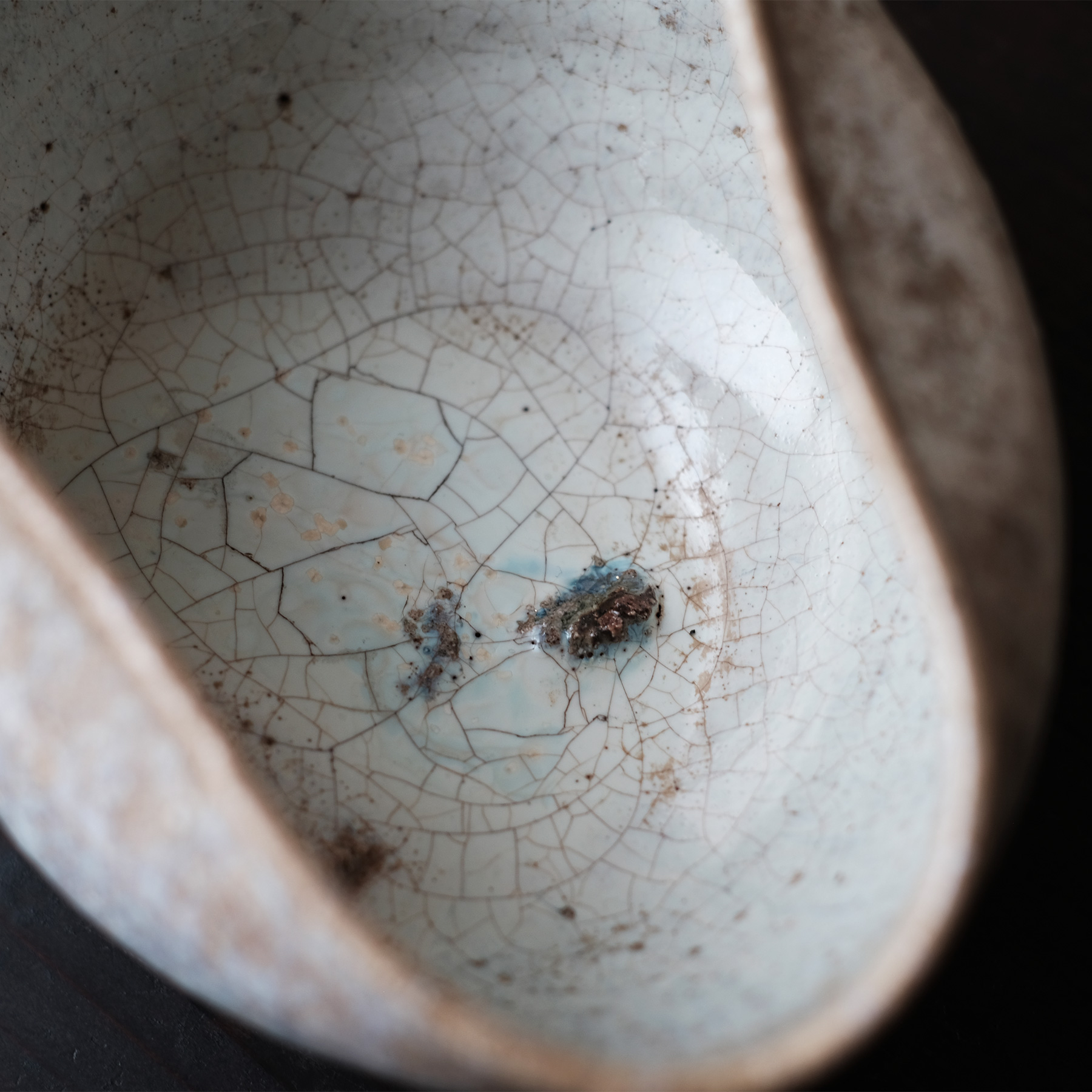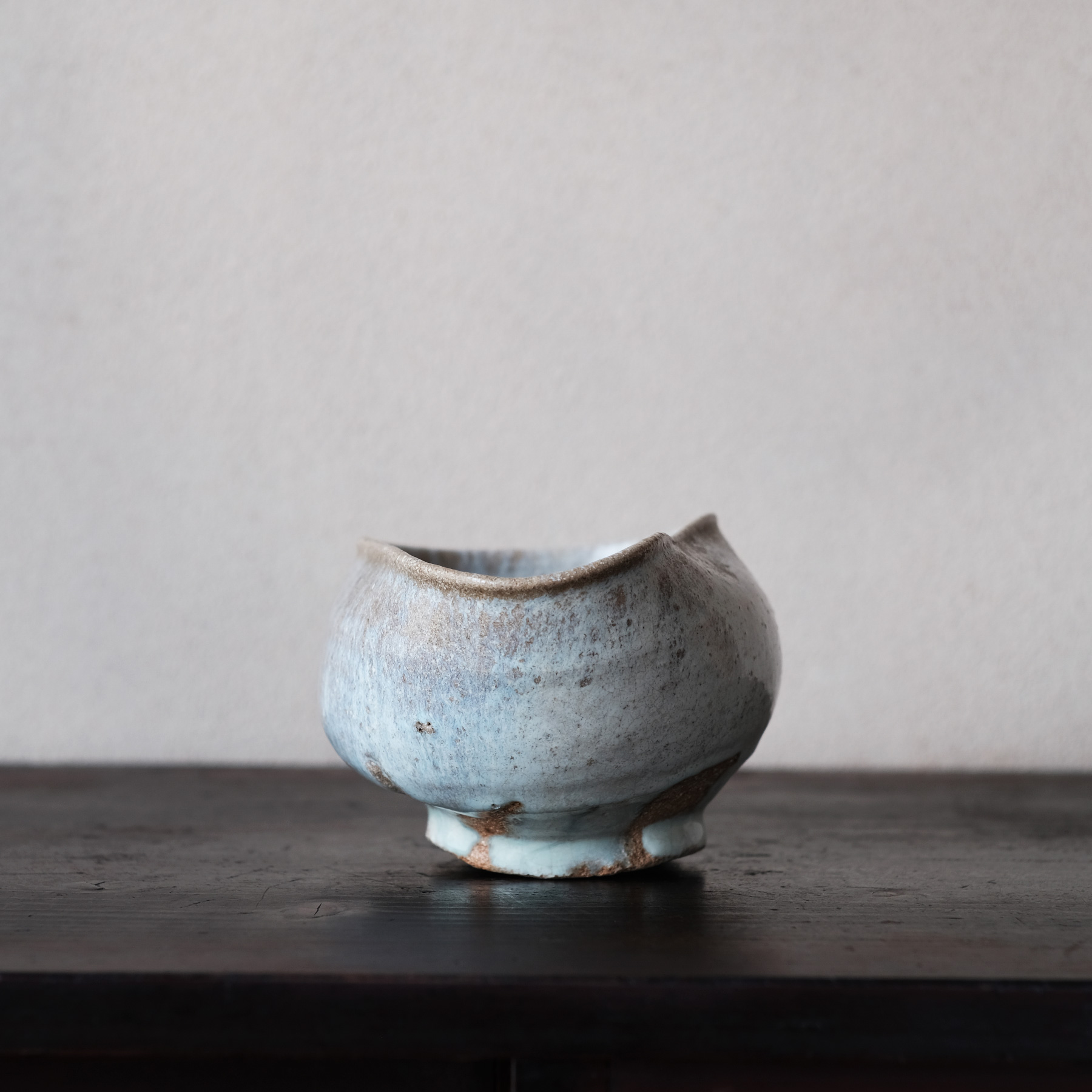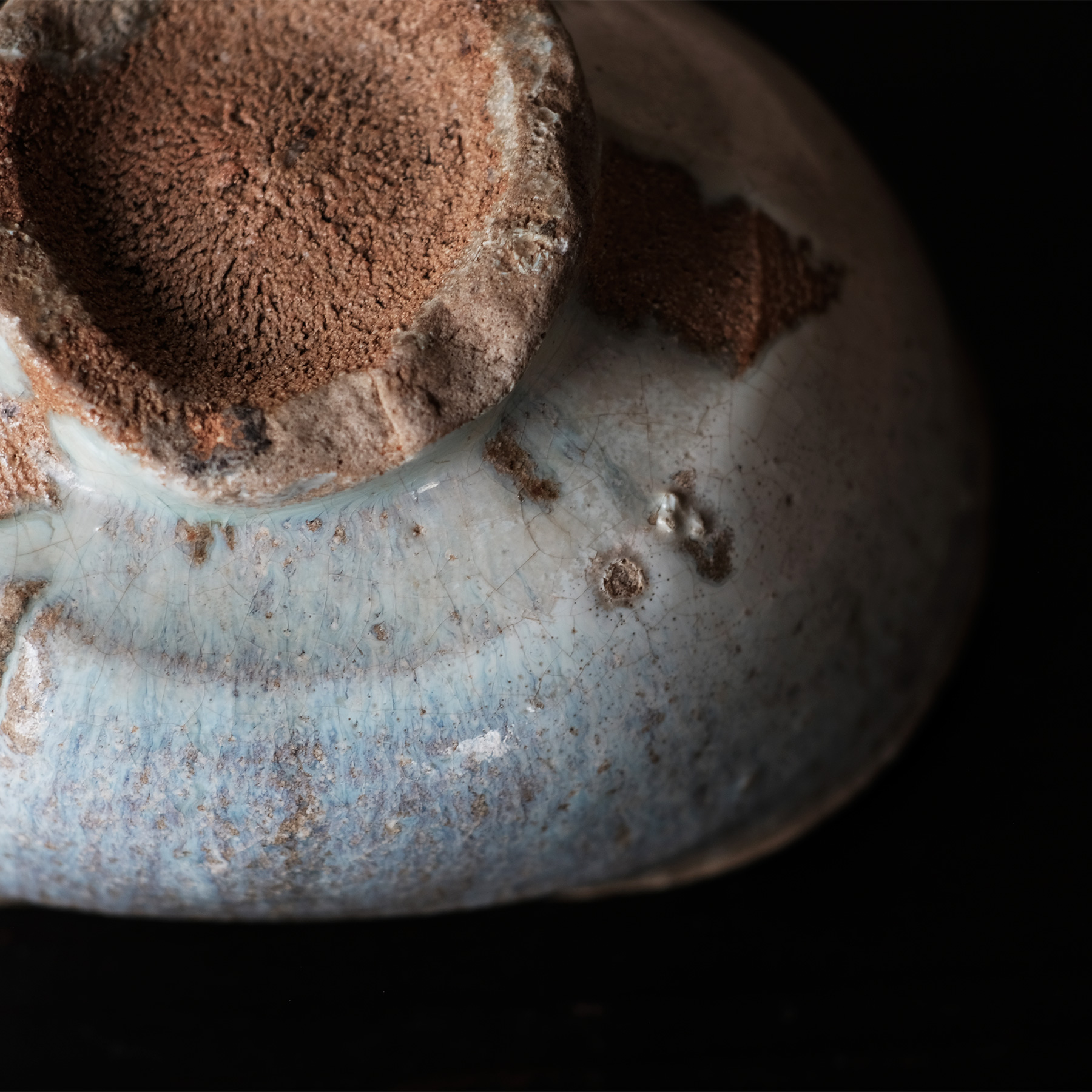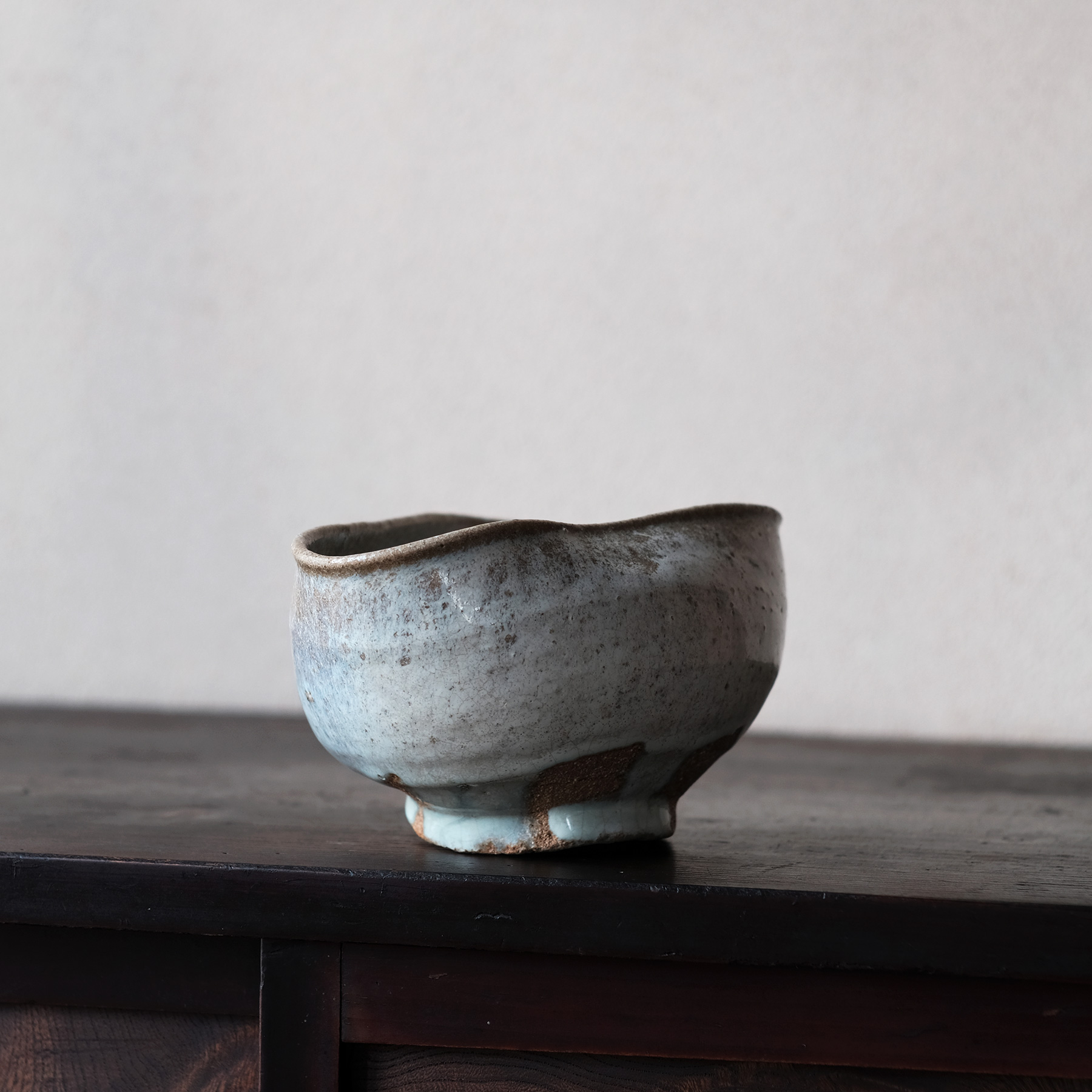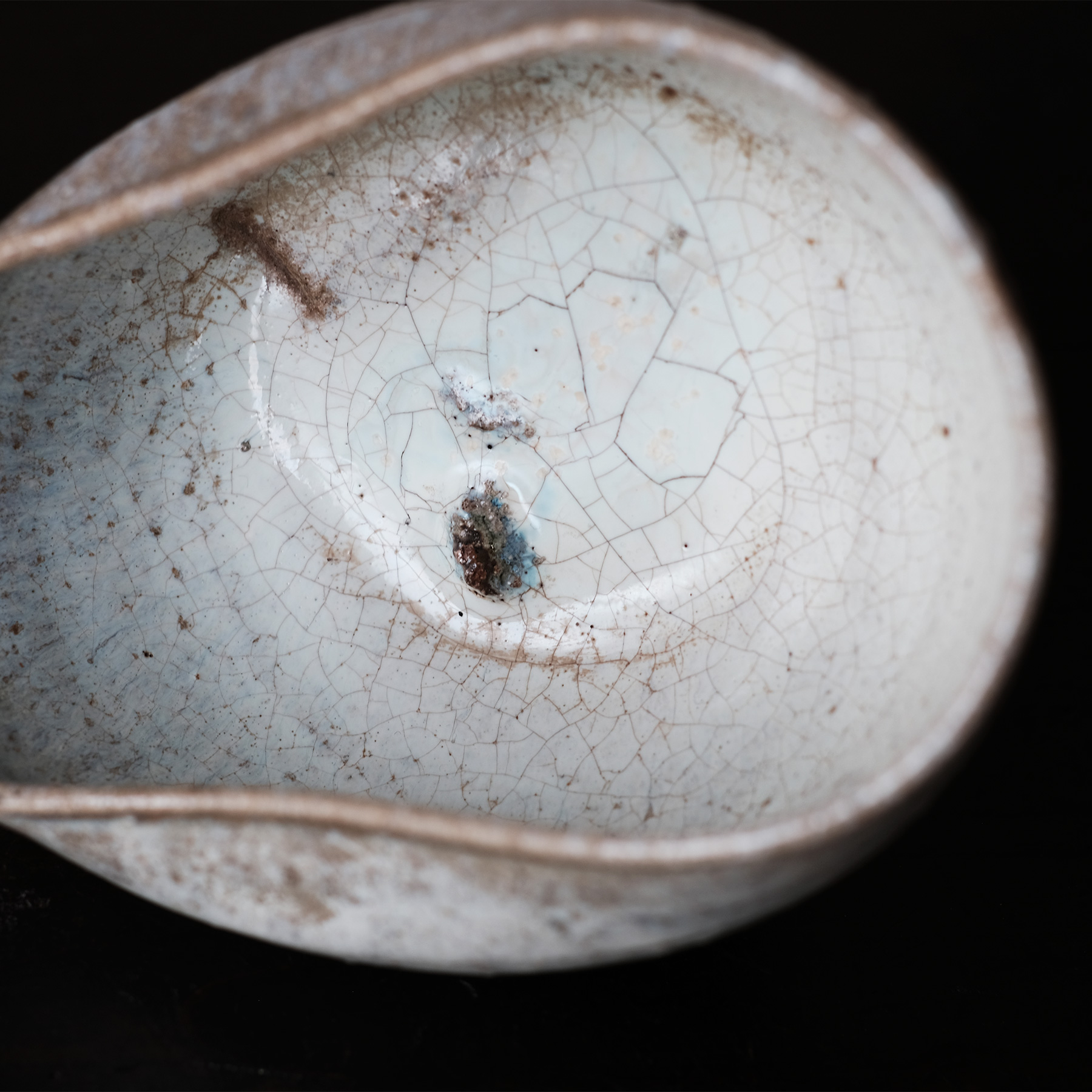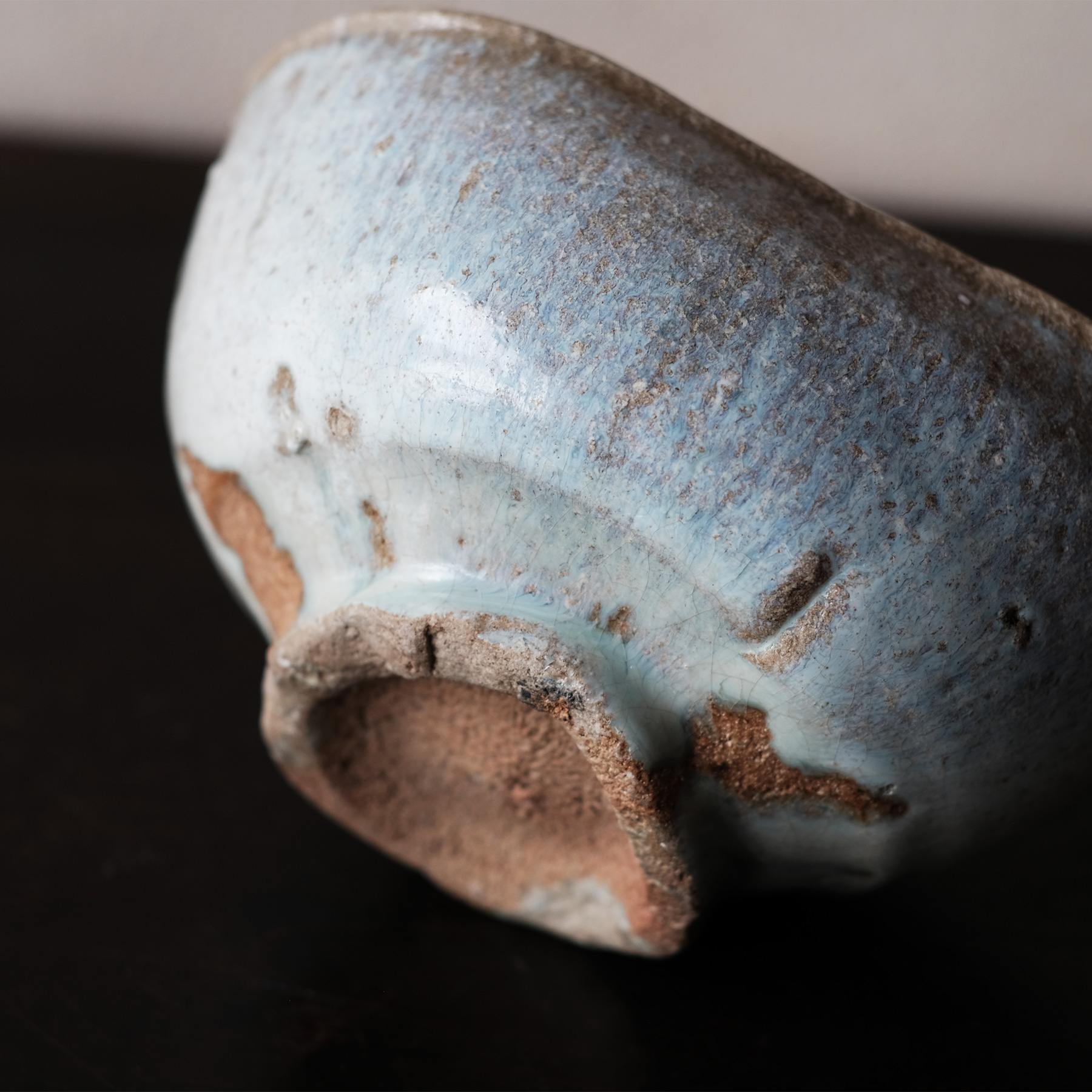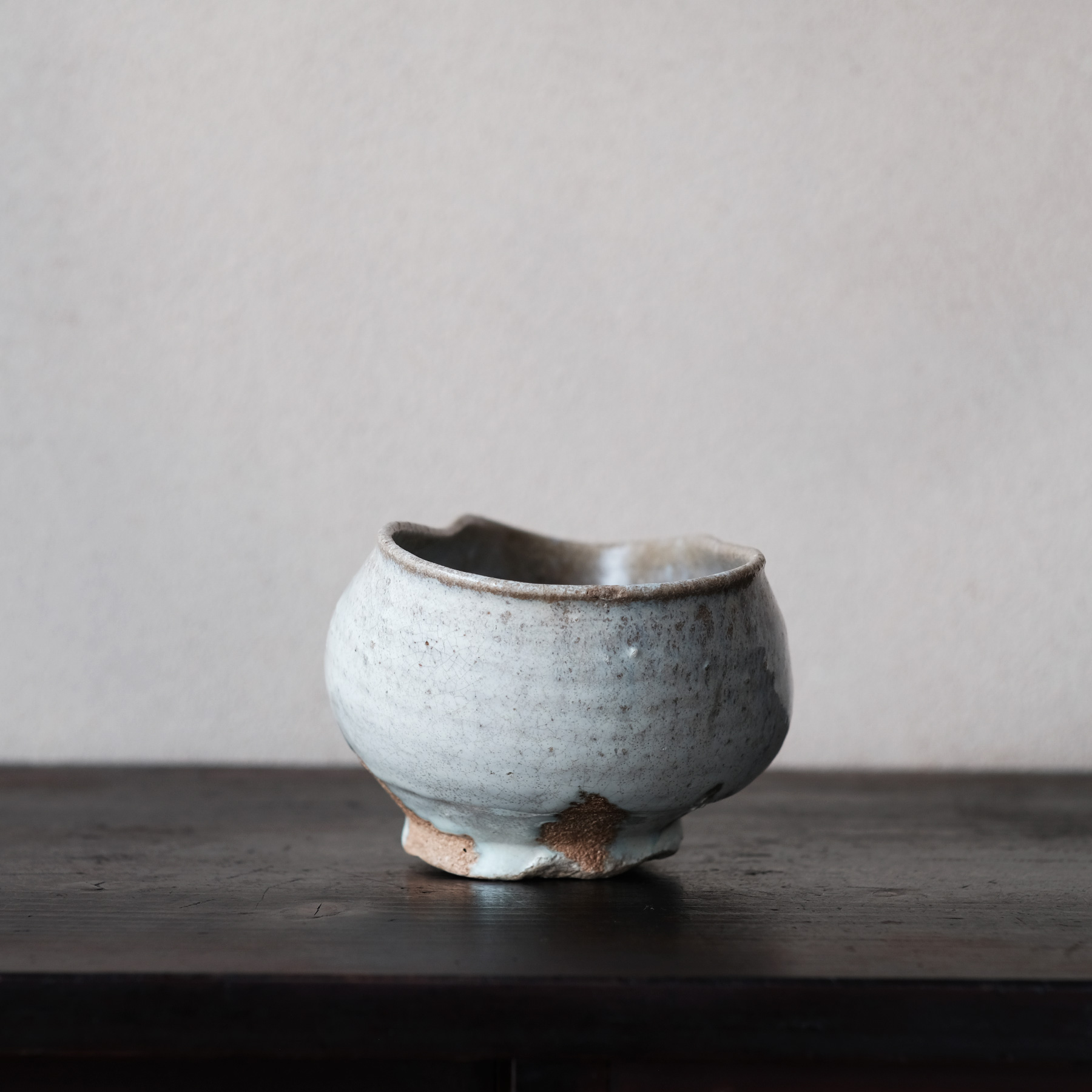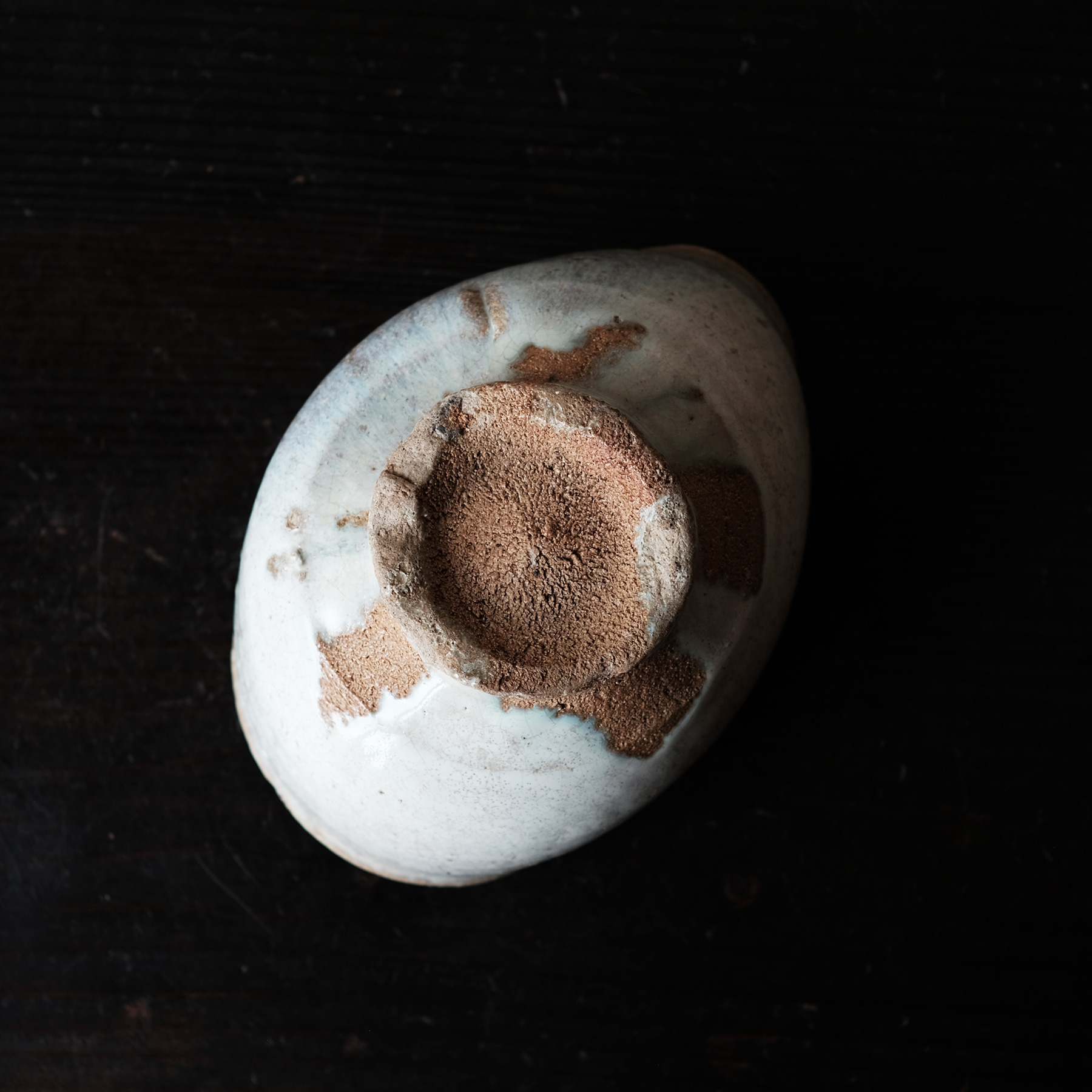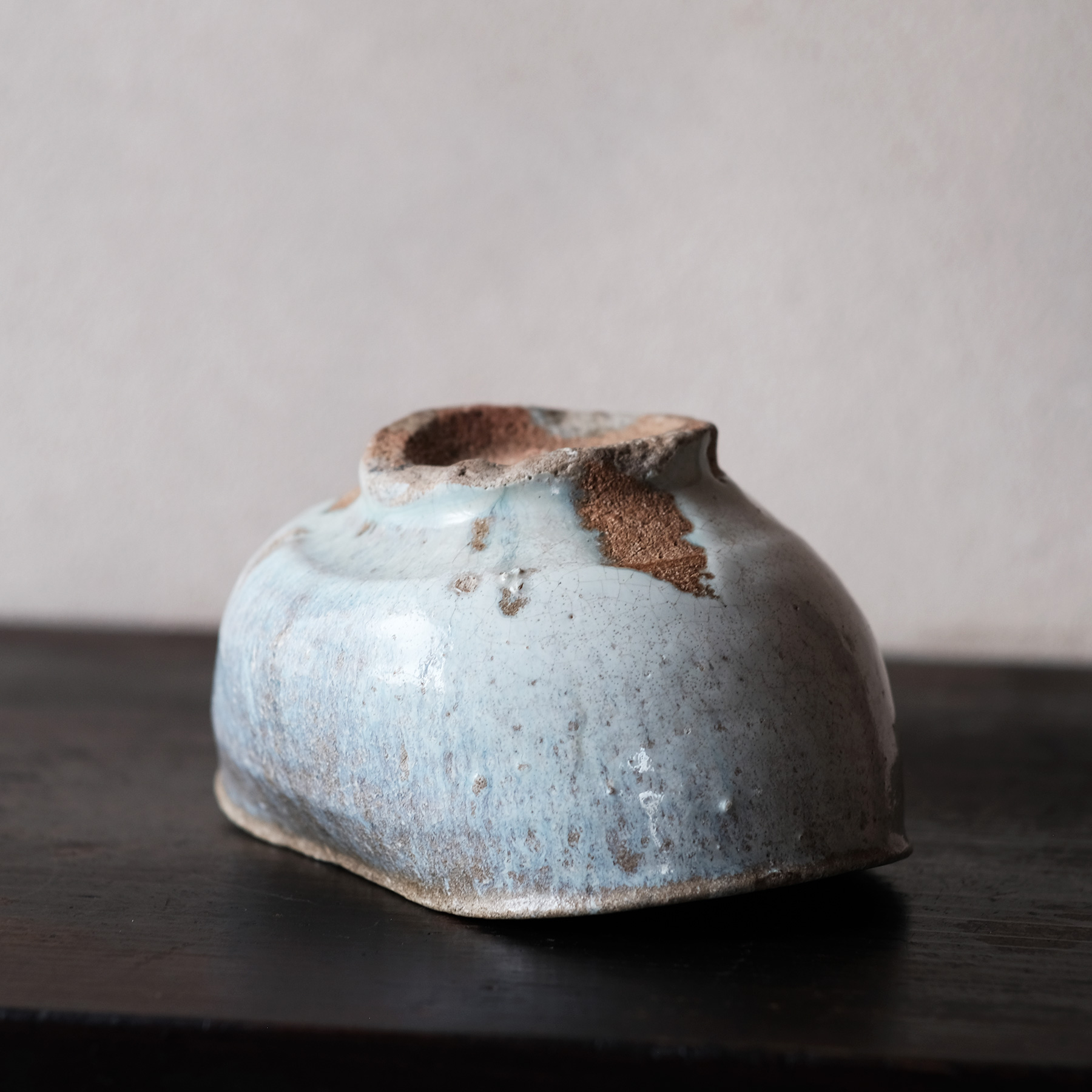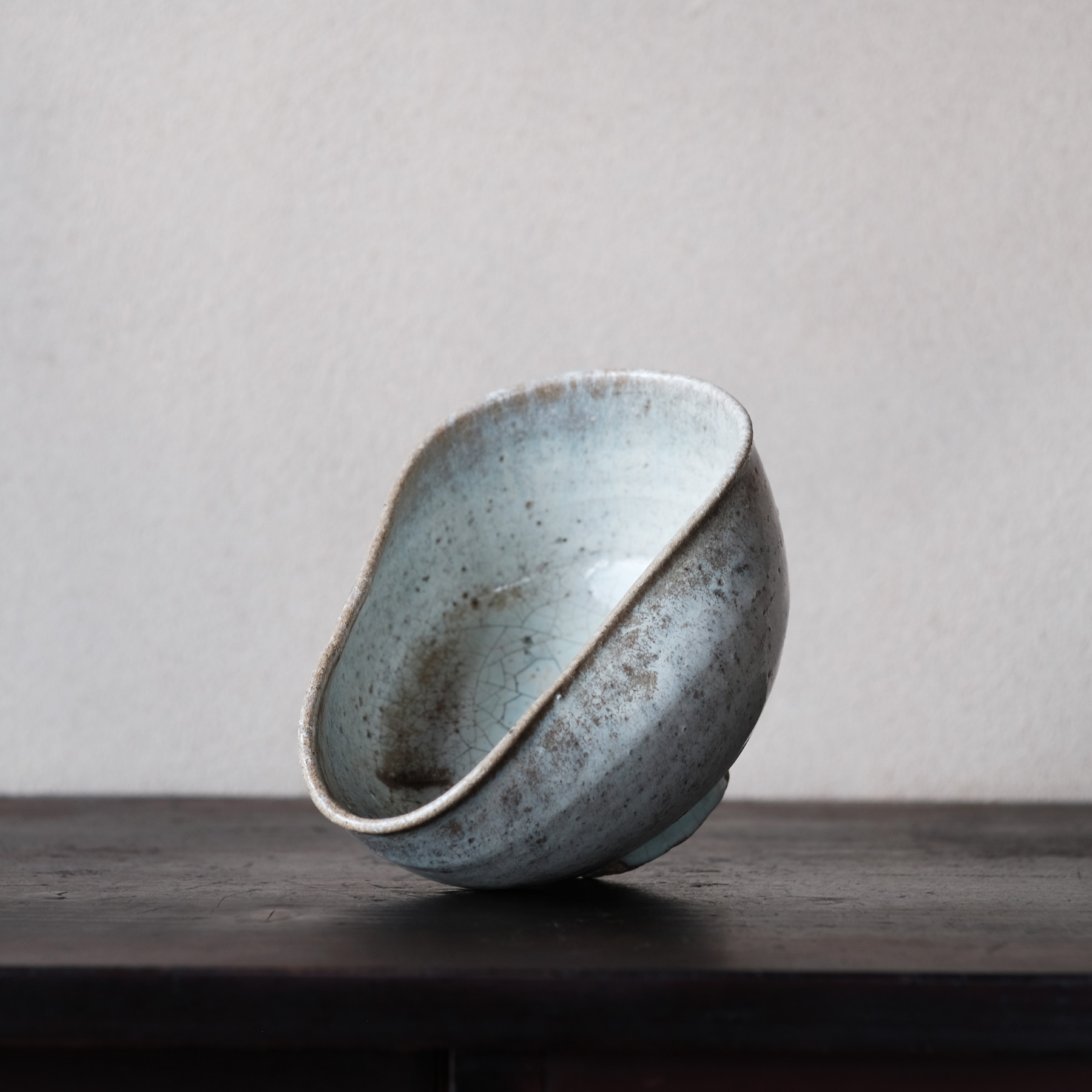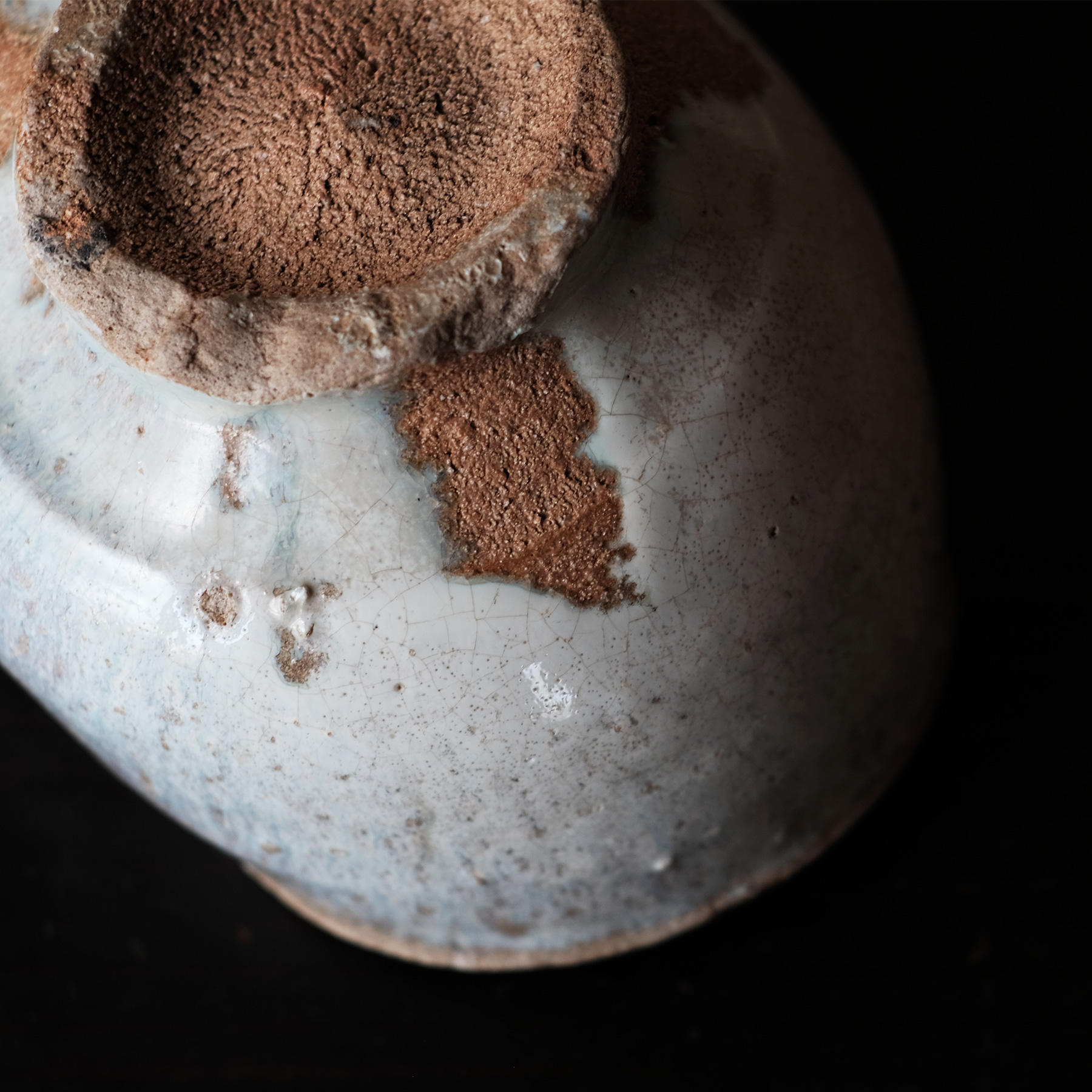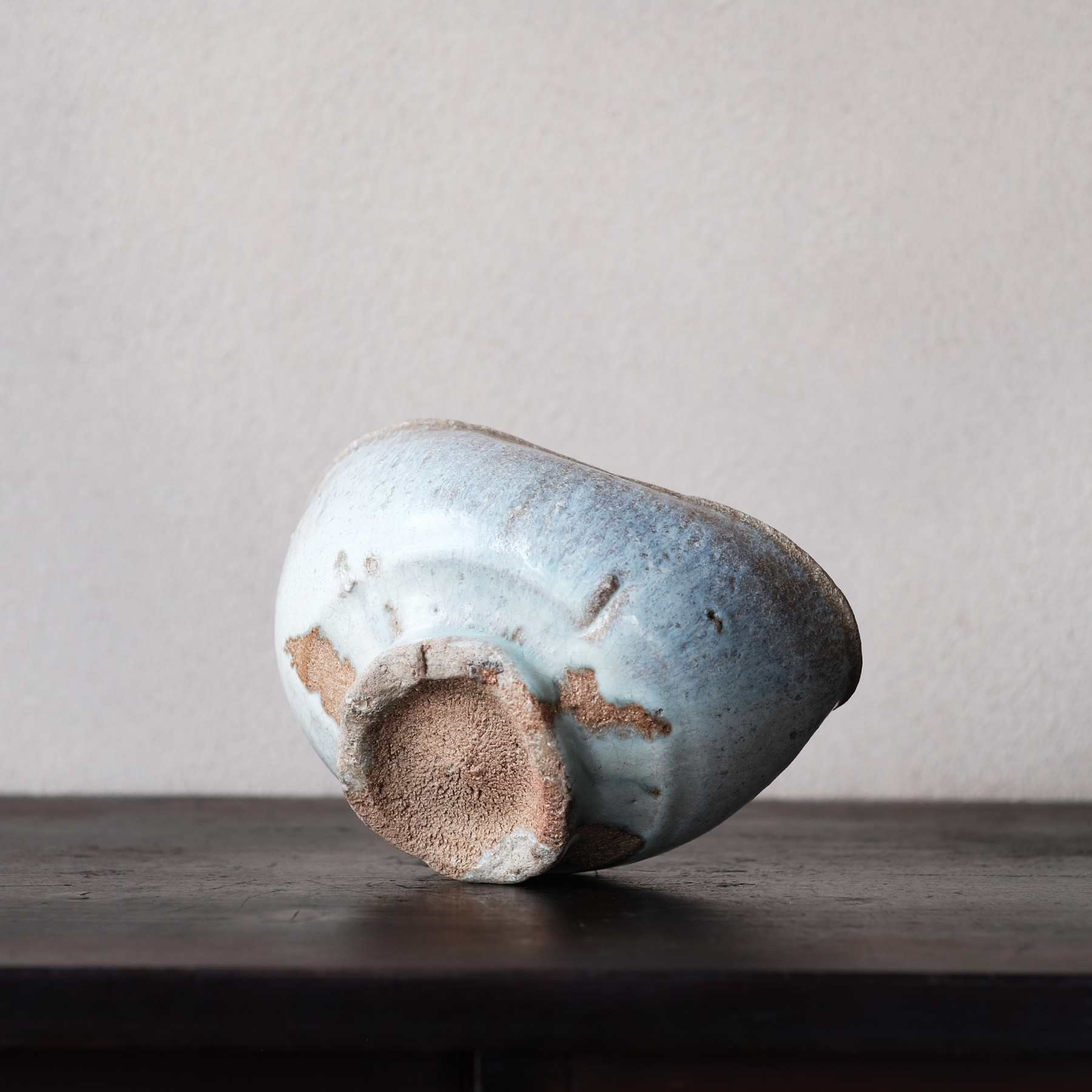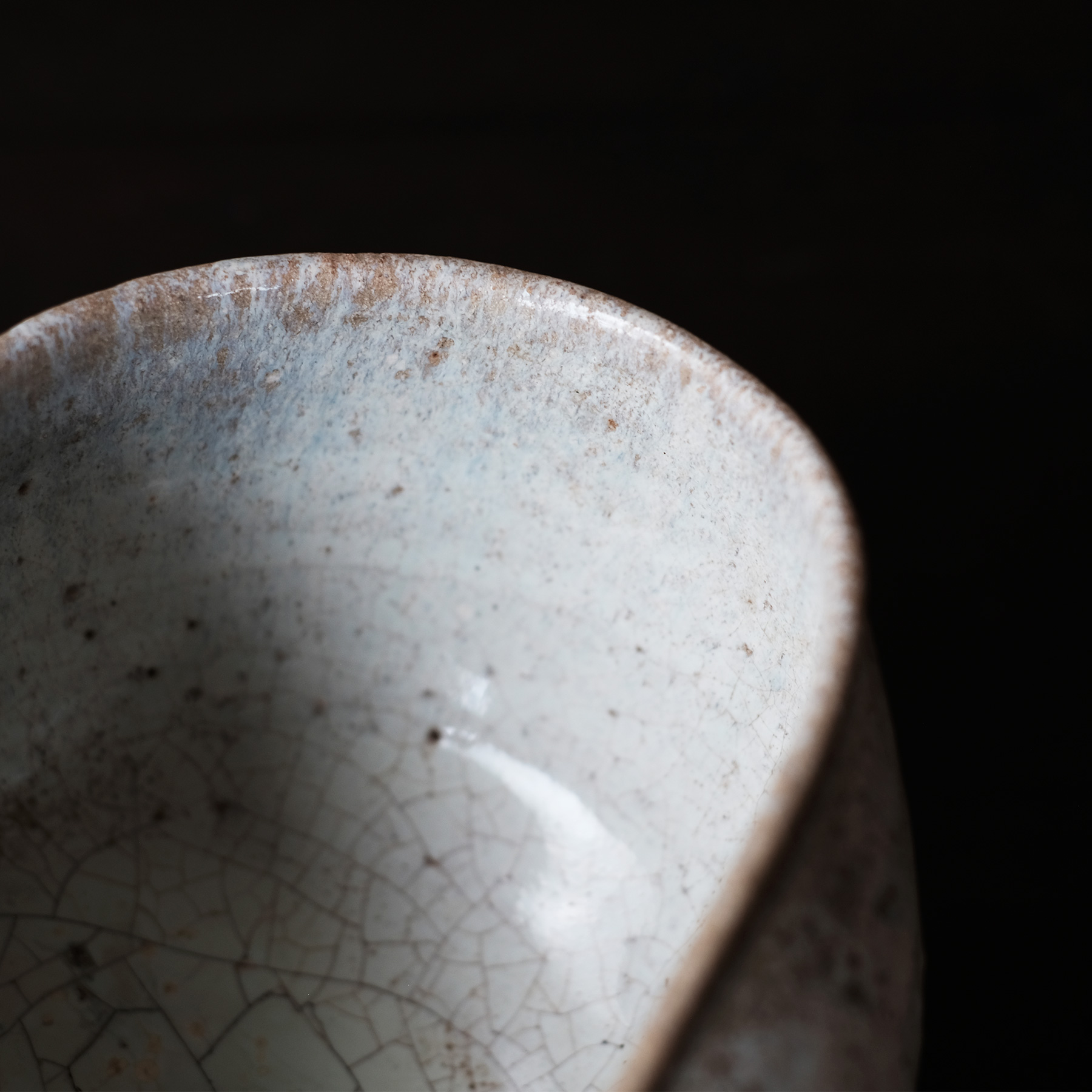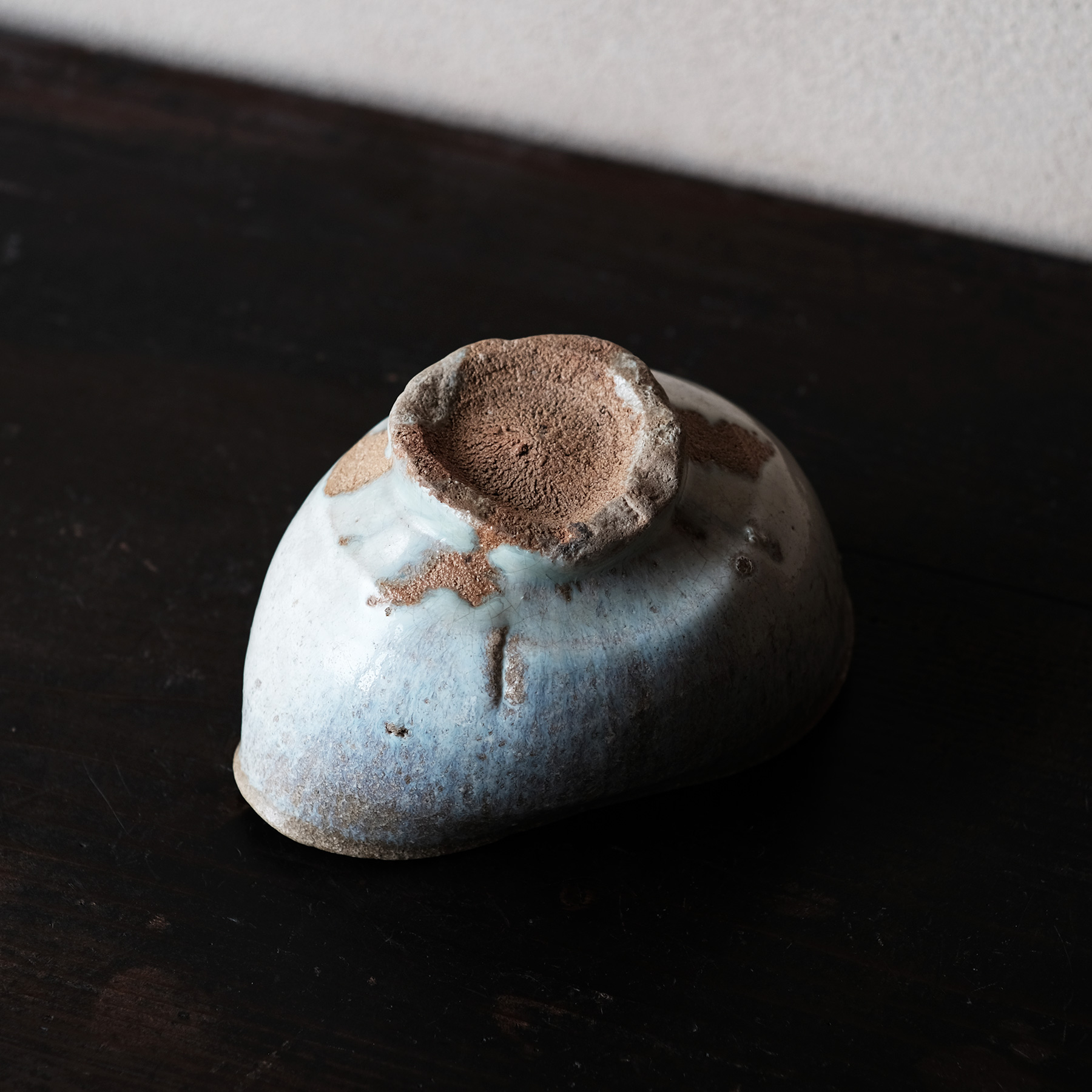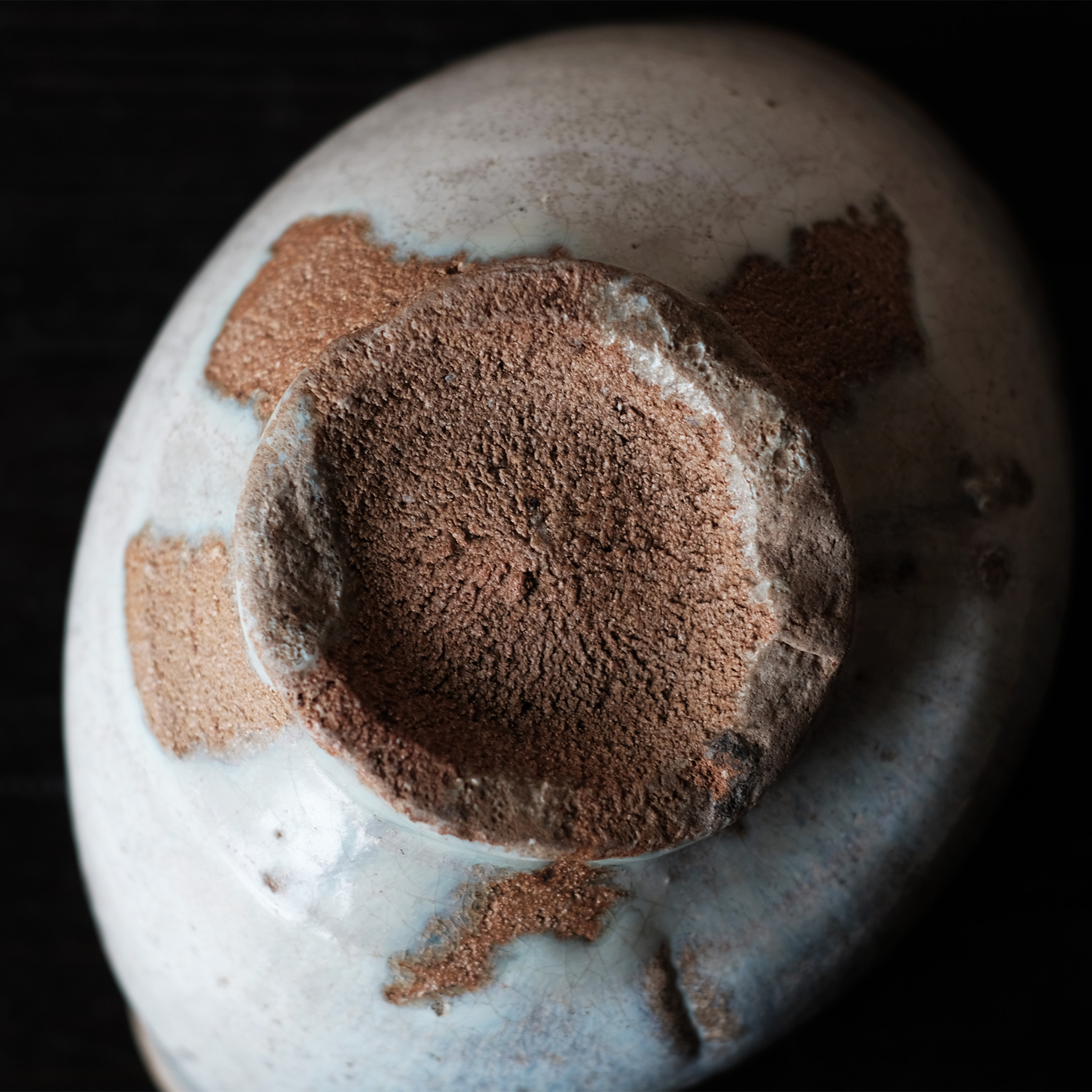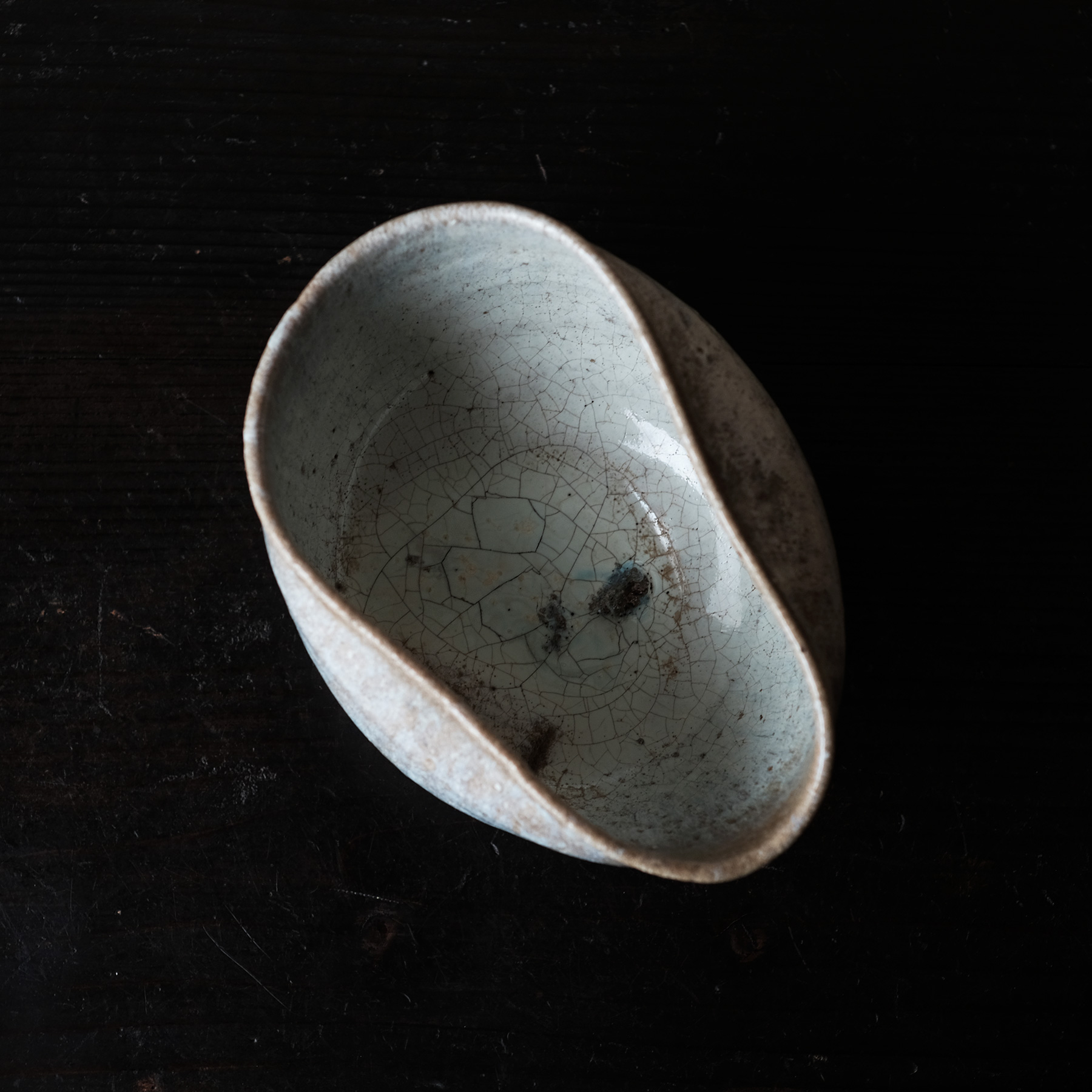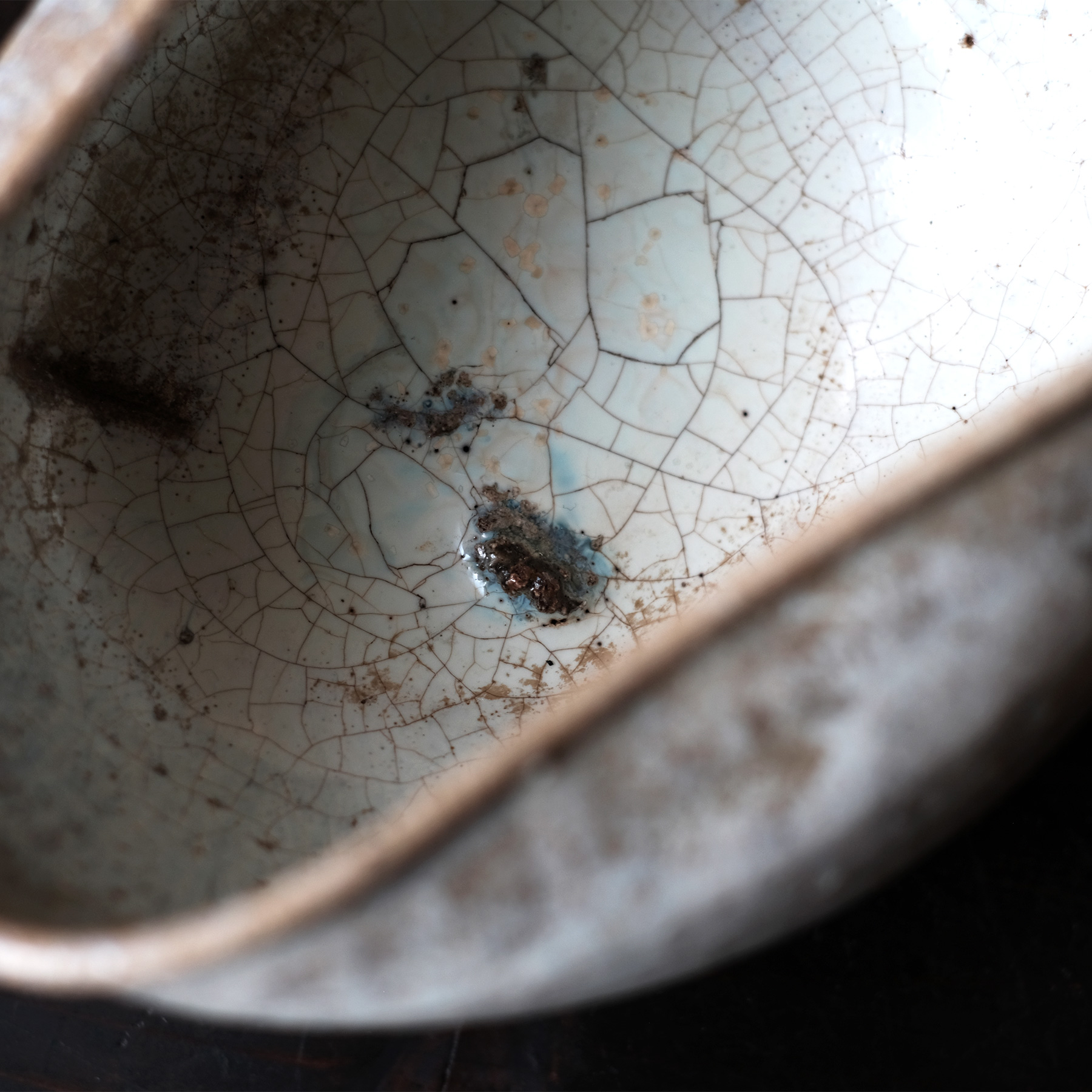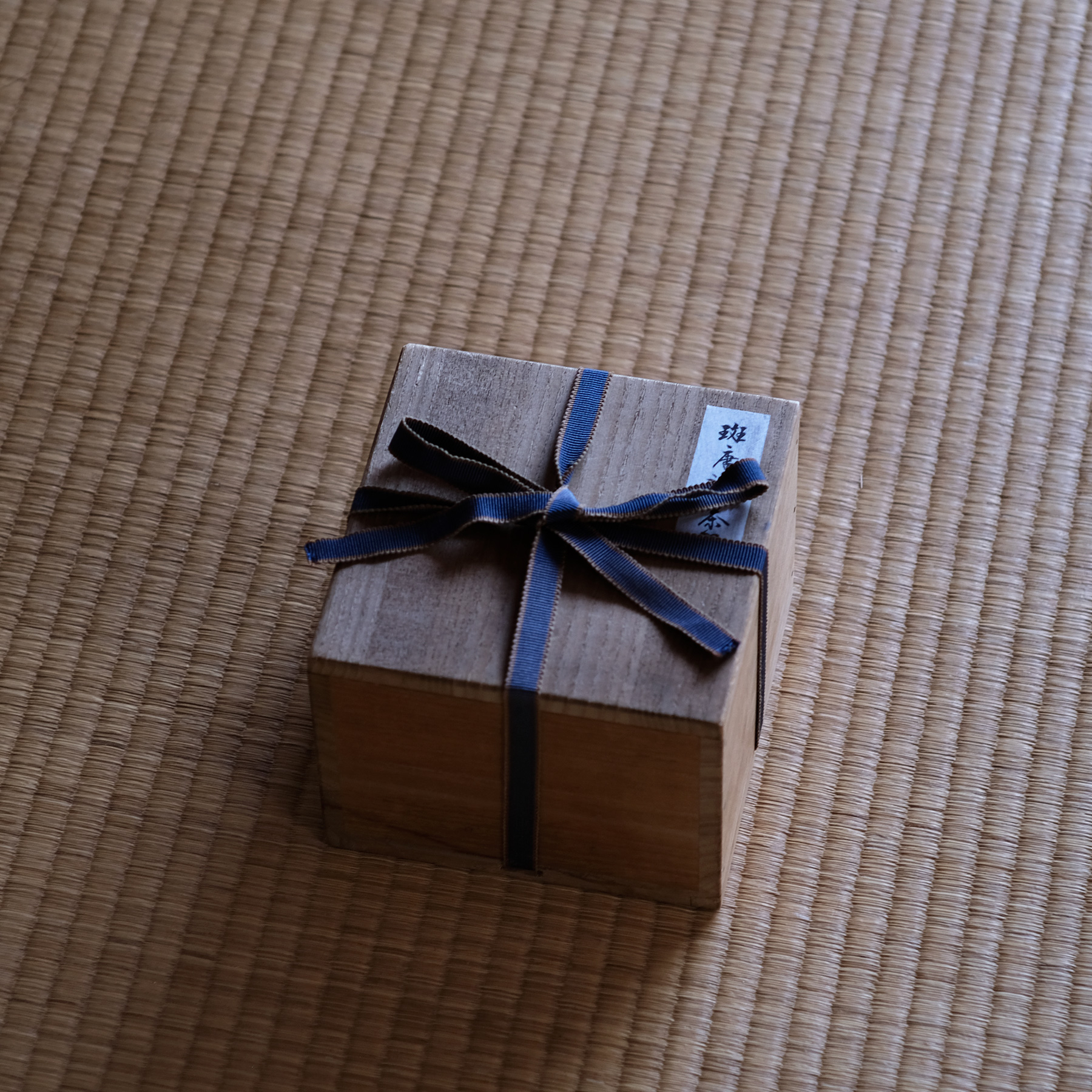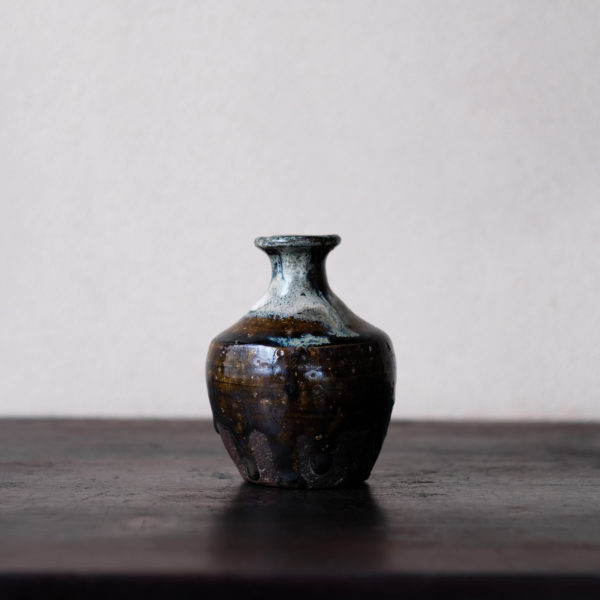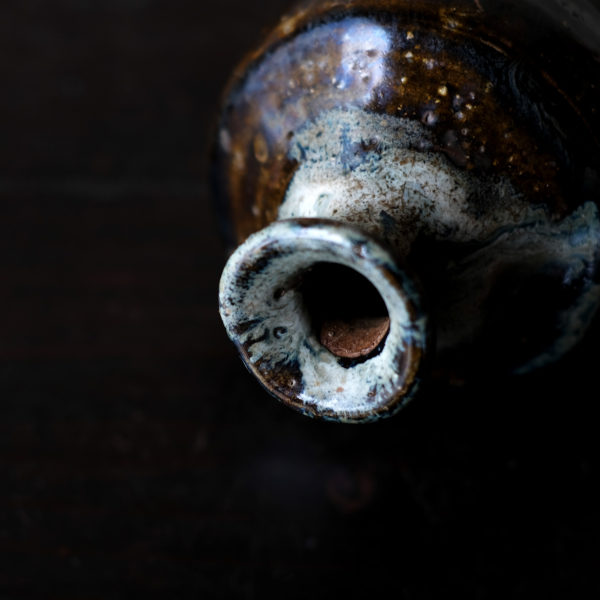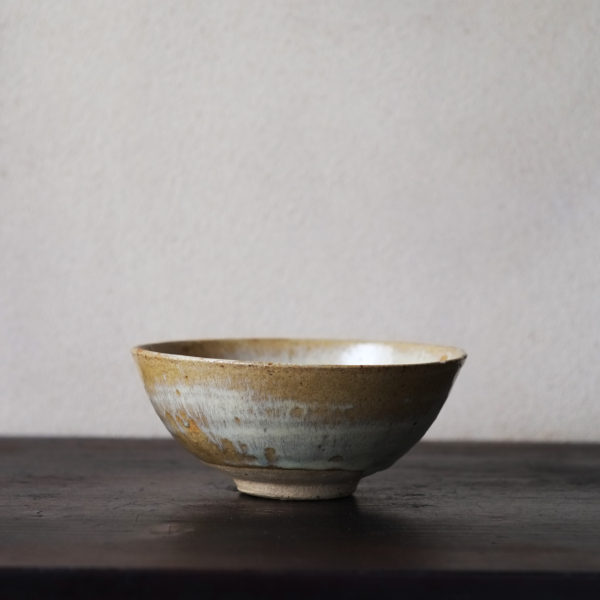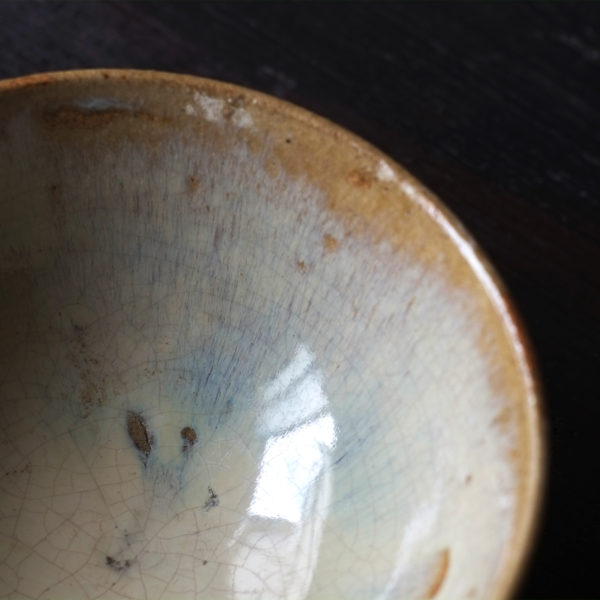Karatsu Ware Hobashira Kiln Madara-Karatsu Style Teabowl
ARCHIVEDA remarkable Kogarasu teabowl, known as a Madara Karatsu, crafted in the Hobashira kiln during the Azuchi-Momoyama period. It stands as a testament to the early days of Karatsu ware, predating the Imjin War as known as the Japanese invasions of Korea. Made from significant sandy clay and adorned with a thickly applied straw ash glaze exhibiting fine crackle glazes, this bowl is a rare find due to its relatively large size and minimal acquired defects.
‘Madara Karatsu’ is a specific type of Karatsu ware distinguished by its use of straw ash glaze, originating around Kishidake in Kitahata, Karatsu, predating the Imjin War as known as the Japanese invasions of Korea (1592–1598). While the technique’s origins are speculated to stem from North Hamgyong Province on the Korean Peninsula or the South China region of China, definitive identification remains elusive. Among the surviving pieces of Madara Karatsu, this particular bowl is exceptionally valuable due to its scarcity and the absence of significant flaws. The flowing patterns created by the natural kiln alteration of straw ash glaze present a breathtaking scenery, which more than compensates for the distortion in the vessel shape.
Upon close examination, a minor chip can be observed on the lip of the bowl, and tea stains can be seen on the interior surface, bearing witness to its historical use. The bowl exhibits a slight wobble, further emphasizing its wild impression. Accompanied by a wodden box, this tea bowl embodies a captivating blend of beauty, rarity, and rich cultural heritage.
- The description will be updated as our research progresses.
- Images may differ in color from the actual products.
- Please read "Terms" when purchasing.

